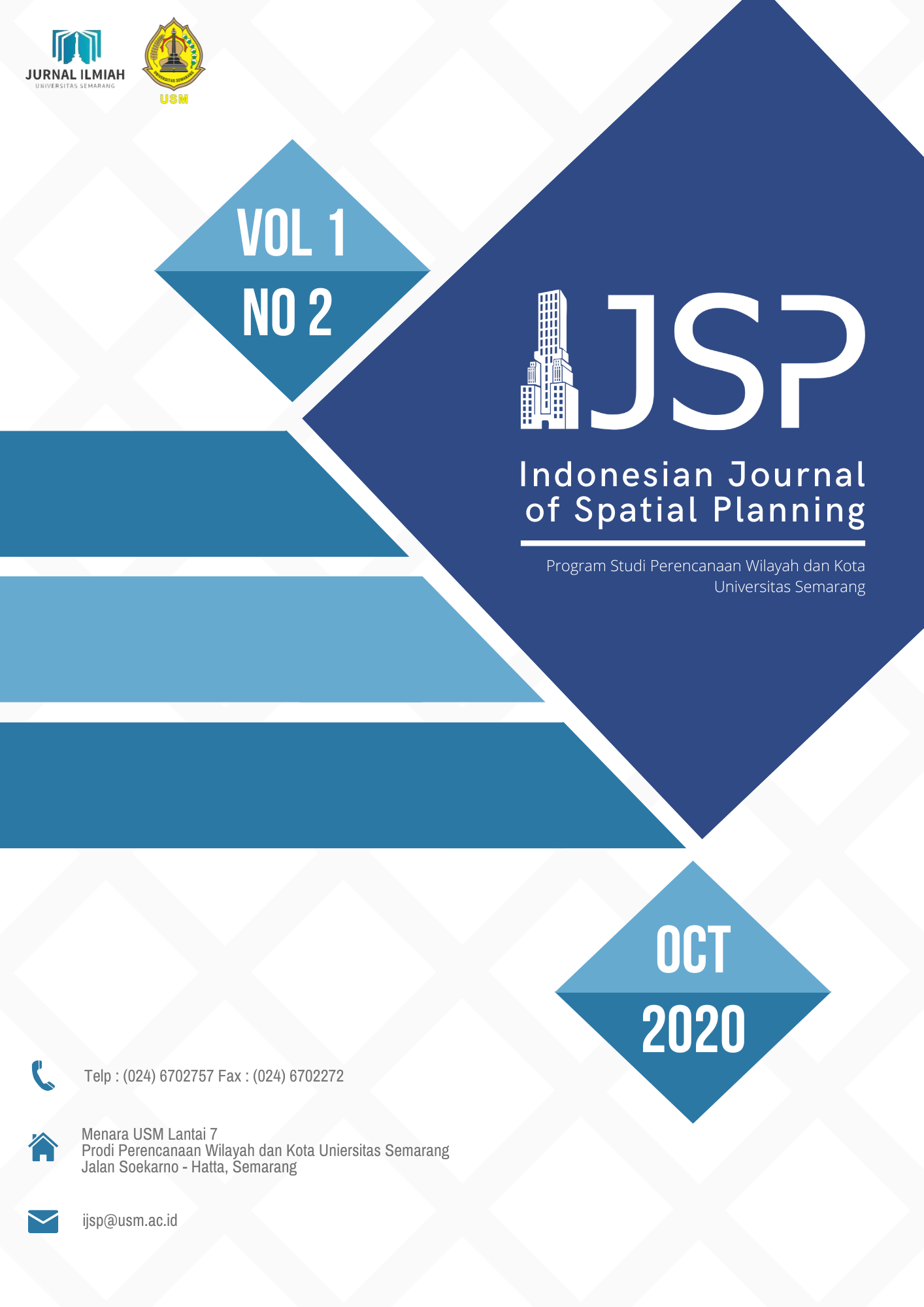BAGAIMANA INOVASI GAGAL: PEMBELAJARAN DARI KLASTER INDUSTRI SARUNG MAJALAYA
DOI:
https://doi.org/10.26623/ijsp.v1i2.2972Keywords:
Difusi pengetahuan, klaster, inovasiAbstract
Pentingnya peran inovasi dalam mendorong pertumbuhan ekonomi menekankan kebutuhan lokal dan wilayah untuk menciptakan lingkungan yang nyaman bagi perkembangan inovasi. Klaster industri, melalui kedekatan spasialnya menjanikan lingkungan yang dapat memelihara perkembangan inovasi. Namun, menggunakan kasus klaster industri Sarung Majalaya, dengan pendekatan deduktif dan metode kualitatif, penelitian ini mendapatkan bahwa kedekatan spasial bukan satu-satunya faktor yang mendorong terjadinya inovasi. Terdapat faktor-faktor non-fisik yang memiliki peran penting di dalam proses difusi pengetahuan, yaitu proses yang menghasilkan inovasi. Faktor tersebut adalah kemampuan dalam memperoleh, mengasimilasi, dan transformasi pengetahuan baru. Kemampuan tersebut mewakili kemampuan serap atau daya serap dalam proses difusi pengetahuan. Keterbatasan kemampuan individu, kolektif, dan lingkungan pada kapasitas tersebut menyebabkan proses difusi pengetahuan terhambat dan inovasi tidak berkembang di dalam klaster industri Sarung Majalaya. Sebagai pertimbangan kebijakan, mendorong inovasi dalam klaster dapat dilakukan melaui pengembangan infrastruktur, baik infrastruktur dasar serta infrastruktur di bidang penelitian dan pengembangan yang berkaitan dengan industri di dalamnya. Selain itu, adaptasi kolektif juga ternyata penting dalam proses difusi pengetahuan sehingga kapasitas sosial pelaku ekonomi di dalam kawasan perlu diderkuat.
The importance of innovation in driving economic growth emphasizes the need for local and regional to create a convenient environment for innovation development. Industrial cluster, through spatial proximity, promises the environment nurturing innovation. However, by using industrial klaster of Sarung Majalaya, incorporating a deductive approach and qualitative method, this study found that spatial proximity is not the only factor promoting innovation. There are non physical factors playing important role in a process named knowledge diffusion which creates innovation. They are the capacities of knowledge acquirement, knowledge assimilation, and knowledge transformation which represent the absortive capacity in knowledge diffusion. As a policy consideration, promoting innovation within cluster can be conducted by developing basic infrastructure as well as research and development infrastructure. Furthermore, collective adaptation also plays an important role in the process of knowledge diffusion hence social capacity in the cluster should be strengthened.
References
Aiginger, K., & Rossi-Hansberg, E. (2006). Specialization and concentration: A note on theory and evidence. Empirica, 33(4), 255 266.
Bass, F. M. (1969). A new product growth for model consumer durables. Management Science, 15(5), 215 227.
Chen, Y.-S., Lin, M.-J. J., & Chang, C.-H. (2009). The positive effects of relationship learning and absorptive capacity on innovation performance and competitive advantage in industrial markets. Industrial Marketing Management, 38(2), 152 158.
Cohen, W. M., & Levinthal, D. A. (1990). Absorptive capacity: A new perspective on learning and innovation. Administrative Science Quarterly, 128 152.
Dahl, M. S. (2002). Embedded knowledge flows through labor mobility in regional clusters in Denmark. DRIUD Summer Conference on Industrial Dynamics of the New and Old Economy Who Is Embracing Whom.
Florida, R. (2003). Cities and the creative class. City & Community, 2(1), 3 19.
Henderson, J., & Weiler, S. (2010). Entrepreneurs and job growth: Probing the boundaries of time and space. Economic Development Quarterly, 24(1), 23 32.
Hoarau, H. (2014). Knowledge acquisition and assimilation in tourism-innovation processes. Scandinavian Journal of Hospitality and Tourism, 14(2), 135 151.
Hotho, J. J., Becker-Ritterspach, F., & Saka-Helmhout, A. (2012). Enriching absorptive capacity through social interaction. British Journal of Management, 23(3), 383 401.
Klarl, T. (2009). Knowledge Diffusion Processes: Theoretical and Empirical Considerations.
Lauwis, M. (2016). Identifikasi Wilayah dan Karakteristik Megaregion di Indonesia Berdasarkan Aktivitas Pergerakan Barang (Studi Kasus: Wilayah Operasi PT JNE di Jawa bagian Barat). Tugas Akhir Perencanaan Wilayah dan Kota ITB.
Lestari, M. D. A. B., & Siagian, M. C. A. (2018). Perancangan Sarung Majalaya Untuk Busana Ready To Wear. EProceedings of Art & Design, 5(3).
Malmberg, A., S ¶lvell, –., & Zander, I. (1996). Spatial clustering, local accumulation of knowledge and firm competitiveness. Geografiska Annaler: Series B, Human Geography, 78(2), 85 97.
Mitra, J. (2000). Making connections: Innovation and collective learning in small businesses. Education+ Training.
Porter, M. E. (2000). Location, competition, and economic development: Local clusters in a global economy. Economic Development Quarterly, 14(1), 15 34.
Downloads
Published
Issue
Section
License
Authors who publish with this journal agree to the following terms:
Authors retain copyright and grant the journal right of first publication with the work simultaneously licensed under a Creative Commons Attribution 4.0 International License that allows others to share the work with an acknowledgement of the work's authorship and initial publication in this journal.Authors are able to enter into separate, additional contractual arrangements for the non-exclusive distribution of the journal's published version of the work (e.g., post it to an institutional repository or publish it in a book), with an acknowledgement of its initial publication in this journal.
Authors are permitted and encouraged to post their work online (e.g., in institutional repositories or on their website) prior to and during the submission process, as it can lead to productive exchanges, as well as earlier and greater citation of published work (See The Effect of Open Access).

This work is licensed under a Creative Commons Attribution 4.0 International License.

